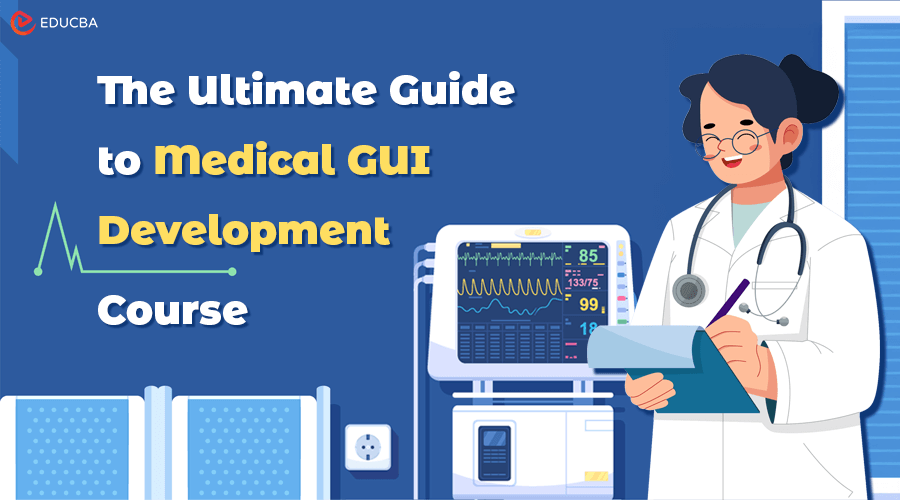
Medical GUI Development: Overview
Creating software for medical devices can be challenging. Whether developing your first prototype or creating a next-gen solution for a medtech company, building a smooth, reliable, and user-friendly interface is a significant hurdle. The medical GUI development course by Scythe Studio offers more than just basic tutorials or “how-to” guides. It provides a real-world, focused approach for teams building software for medical devices using Qt, a powerful framework known for its reliability and usability in healthcare projects.
Why the Medical GUI Course Was Created?
Over time, developers working on medical device projects often struggle with more than just UI design. Picking the right tools, planning architecture, managing connectivity, and balancing performance with usability are common challenges. The course shares practical experience and gives MedTech teams a head start, focusing on the real-world aspects of building a medical product rather than just Qt coding tutorials.
Course Breakdown
The Medical GUI Course covers key topics that matter most in medical device development. These short, to-the-point videos are available on YouTube and Spotify (for audio-only listening) and cover the following topics:
- Why Qt for Medical Devices?: Learn why Qt is an ideal choice for healthcare projects, including its benefits and limitations.
- Choosing Embedded Hardware: Understand what to consider when building for small screens versus advanced monitors.
- Operating Systems: Get insights into the surprising operating systems that real medical devices run on.
- Medical Software Architecture: Discover best practices aligning with technology and regulatory requirements.
- Connectivity: Learn about essential Qt modules, HL7 FHIR, PACS, and cybersecurity best practices.
- Qt DICOM Viewer: Understand how to display CT, MRI, or X-ray scans using Qt.
- Usability and Accessibility: Find out how to design interfaces that doctors and nurses want to use.
Each video in the course is built with the medical industry in mind, addressing the challenges developers face when building regulated software for healthcare and ensuring compliance with relevant standards. Learn more about medical software development at Scythe Studio.
Who Should Take the Medical GUI Development Course?
This course is ideal for professionals in the MedTech industry who are involved in medical software development:
- Founders or Product Leads in MedTech companies
- CTOs or Lead Developers evaluating tools for upcoming medical devices
- Engineers responsible for implementing user interfaces for regulated products
If your device features a screen and requires a solid, scalable user interface, this course will help streamline your development process.
Beyond the Course
Scythe Studio specializes in Qt-based medical software development, with over 80% of its projects in healthcare. As an official Qt Service Partner and ISO 13485:2016 certified company, it provides UI development and complete systems that meet real-world medical needs. This course is part of MedTech’s mission to help MedTech companies build better software faster using the right tools and development processes.
Final Thoughts
Effective medical GUI development requires the right tools, strategies, and industry-specific knowledge. This course provides valuable insights into building reliable, user-friendly medical interfaces using Qt, addressing real-world challenges in software architecture, usability, and compliance. With concise, practical lessons, this course helps MedTech professionals streamline development and create high-quality software for medical devices. Explore the course on YouTube or listen to it on Spotify to gain expert insights and simplify the development process. For further guidance, Scythe Studio offers expert consultation to help choose the best approach for medical software projects.
Recommended Articles
We hope this guide to medical GUI development helps you understand the importance of intuitive and efficient user interfaces in healthcare applications. Check out these recommended articles for more insights into medical software innovation.

